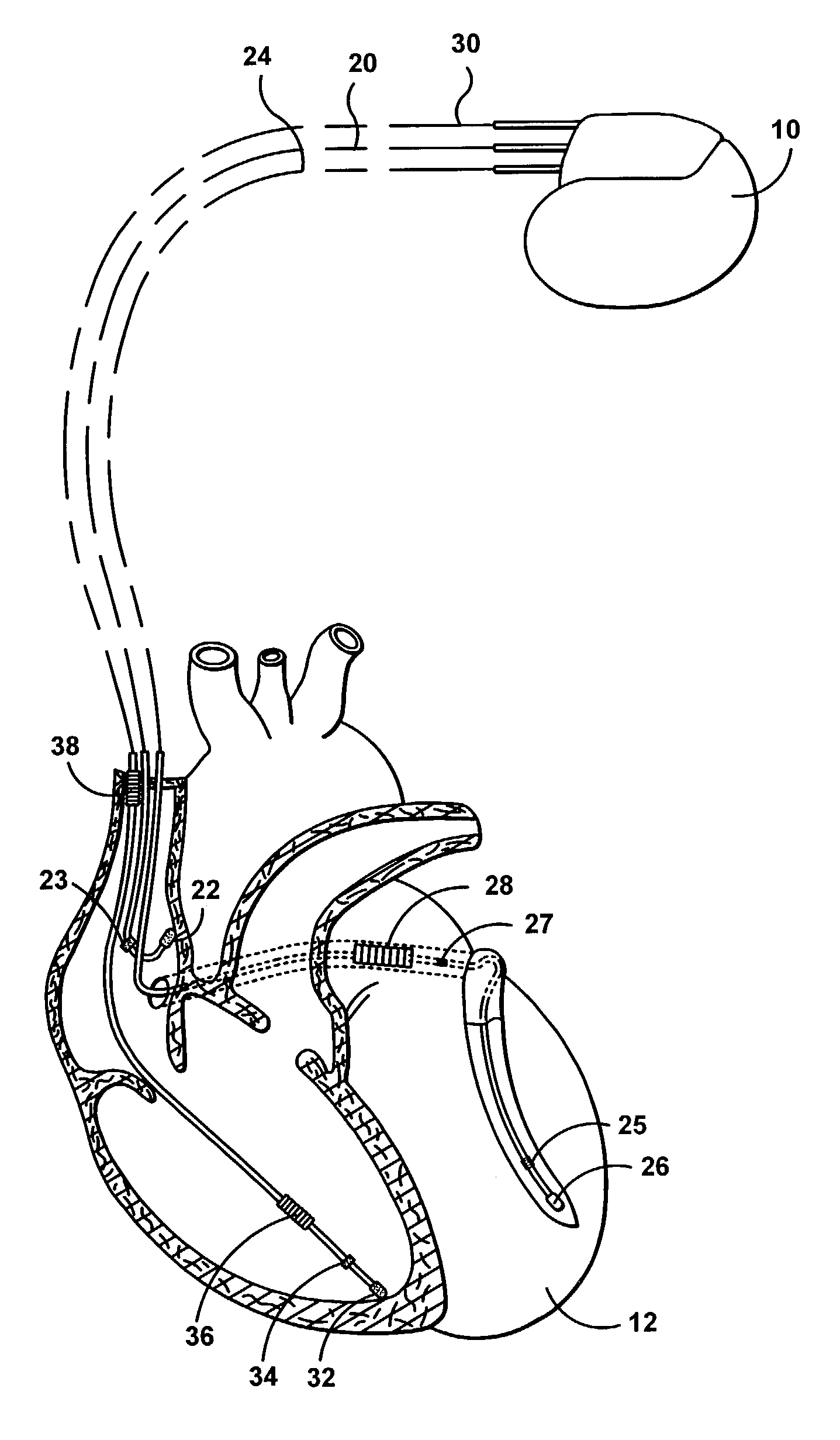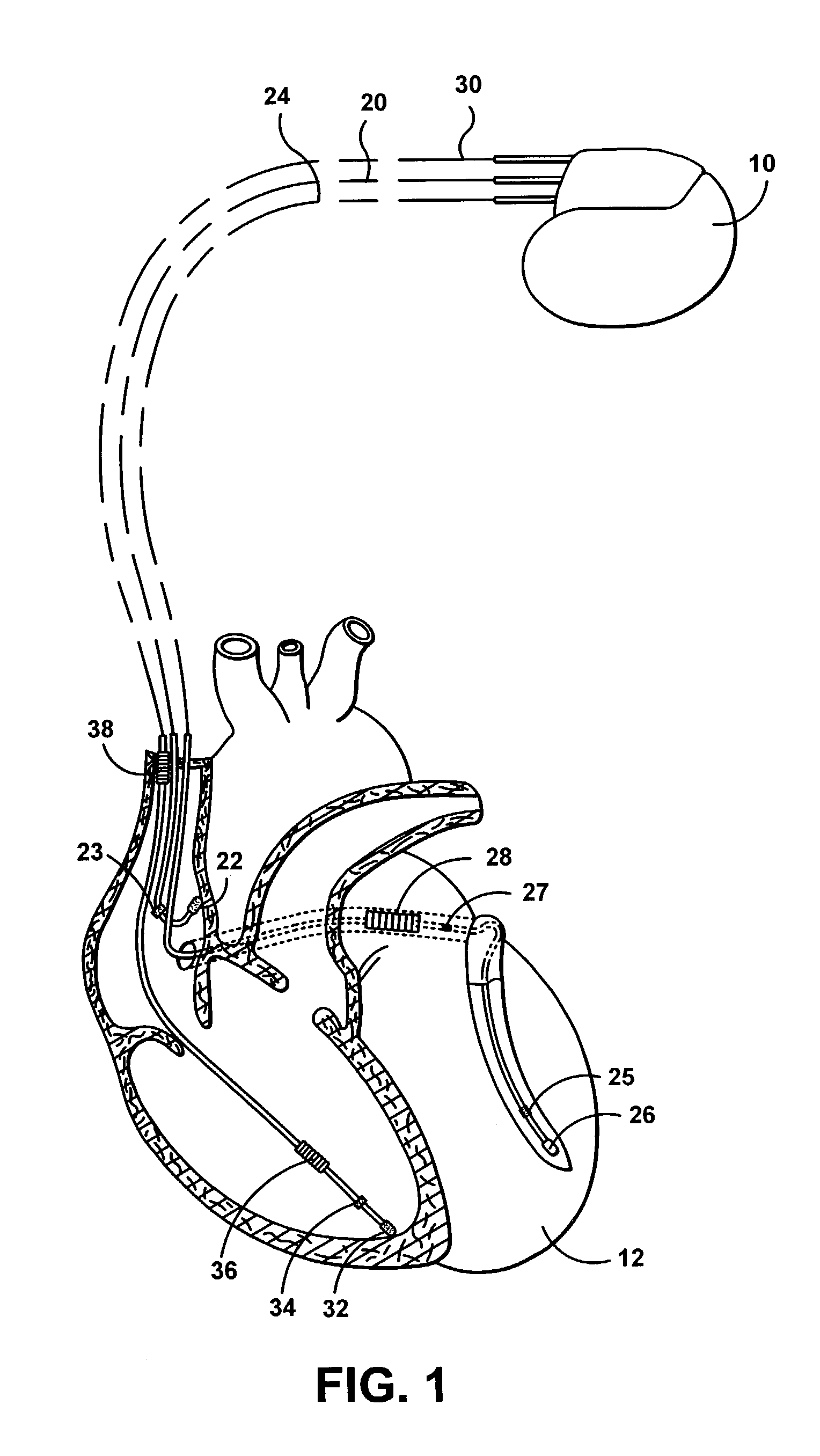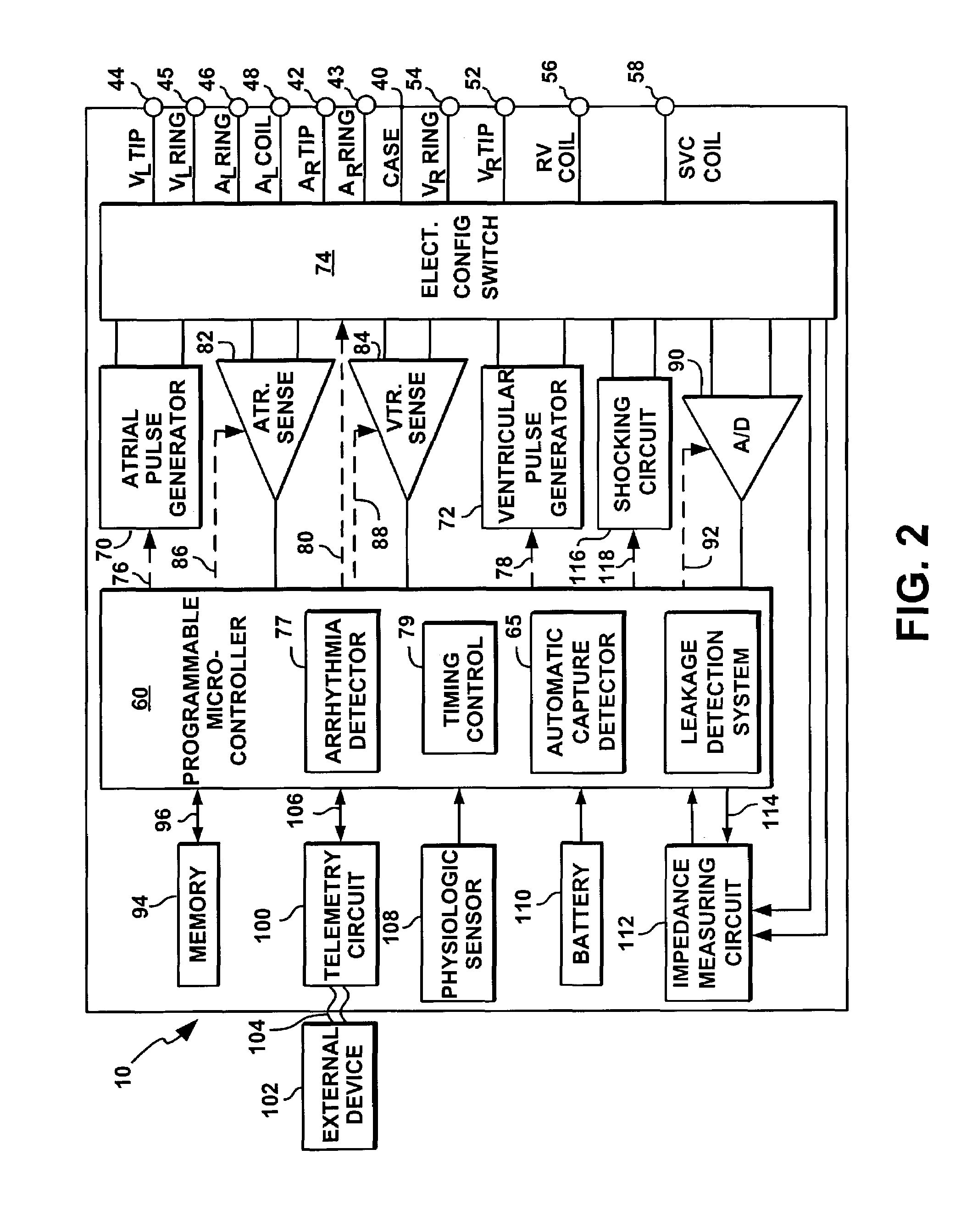System and method for measuring lead impedance in an implantable stimulation device employing pulse-train waveforms
a pulse-train waveform and implantable technology, applied in the field of implantable cardioverter defibrillators, can solve the problems of lead failure, muscle twitching and sensation, and the lead impedance above 100 ohms is generally considered a sign of lead failure, so as to improve the accuracy of patient lead impedance measurement, the effect of reducing the patient's sensation and increasing the stimulation threshold
- Summary
- Abstract
- Description
- Claims
- Application Information
AI Technical Summary
Benefits of technology
Problems solved by technology
Method used
Image
Examples
Embodiment Construction
[0030]The following description is of a best mode presently contemplated for practicing the present invention. This description is not to be taken in a limiting sense but is made merely for the purpose of describing the general principles of the invention. The present invention is directed at an improved patient impedance measuring system for implantable cardiac stimulating devices with pacemaking, cardioversion, and / or defibrillation capabilities.
[0031]A cardiac stimulation device will thus be described in conjunction with FIGS. 1 and 2, in which the features included in this invention could be implemented. It is recognized, however, that numerous variations of such a device exist in which various methods included in the present invention can be implemented without deviating from the scope of the present invention.
[0032]FIG. 1 illustrates a stimulation device 10 in electrical communication with a patient's heart 12 by way of three leads 20, 24 and 30 suitable for delivering multi-c...
PUM
 Login to View More
Login to View More Abstract
Description
Claims
Application Information
 Login to View More
Login to View More - R&D
- Intellectual Property
- Life Sciences
- Materials
- Tech Scout
- Unparalleled Data Quality
- Higher Quality Content
- 60% Fewer Hallucinations
Browse by: Latest US Patents, China's latest patents, Technical Efficacy Thesaurus, Application Domain, Technology Topic, Popular Technical Reports.
© 2025 PatSnap. All rights reserved.Legal|Privacy policy|Modern Slavery Act Transparency Statement|Sitemap|About US| Contact US: help@patsnap.com



